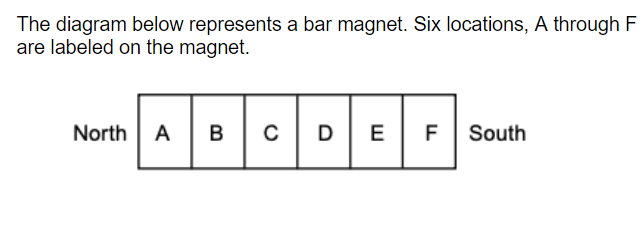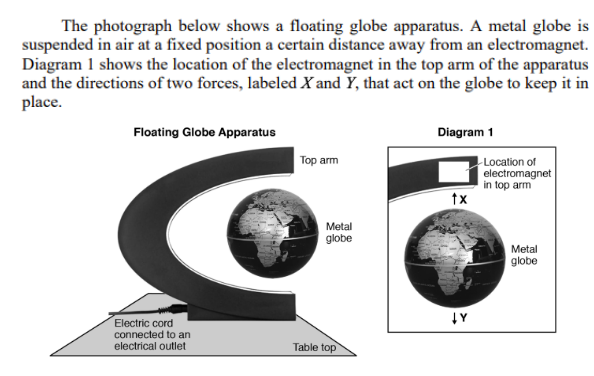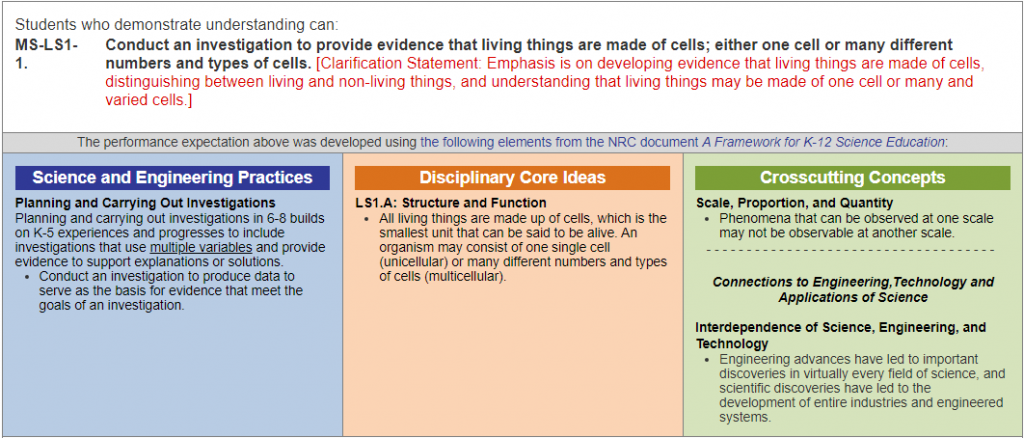With the newly released items of the NYS Science Test, we’ve seen how our instruction needs to level up in complexity and rigor. Your students can no longer only be required to recall facts from a textbook—they must now also be capable of independently reasoning through issues, formulating hypotheses, and making connections between ideas. But transitioning student learning to meet these standards doesn’t have to be daunting. With careful planning and scaffolded instruction, educators can ease students into sensemaking while addressing the rigor required by the NYSSLS.
In this post, let’s explore how educators might use varied strategies to scaffold from basic skills to developing more complex sensemaking skills necessary for rigorous assessment tasks like those in the new NYS Science Test.
Released Test Item Analysis
Let’s explore the difference between tests from the 2019 NYS Science Test and the 2022 NYS Science Test by looking at MS-PS2-3 and comparing their released items!
MS-PS2-3 Standard

2019 NYS Science Test Item

Which two locations on the magnet would have the greatest attractive forces?
- A and F
- B and E
- C and D
- D and F
Students in this instance are:
- Repeating a piece of knowledge they have more than likely discussed and seen before
- They are representing what they know, not applying their knowledge through a novel phenomena/situation
2022 NYS Science Test Item

How did increasing the current through the electromagnet affect the strength of force X and force Y?
A. Force X decreased, and force Y was not affected.
B. Force X increased, and force Y was not affected.
C. Force Y decreased, and force X was not affected.
D. Force Y increased, and force X was not affected.
Students in this instance are:
- Interpreting a novel and highly specific phenomenon
- Using the SEP (Asking Questions & Defining Problems) to frame a hypothesis, DCI (Types of Interactions), and CCC (Cause and Effect).
- Leveraging all 3 dimensions to grapple with a novel situation = Sensemaking
Scaffolding from Representation to Sensemaking for the NYS Science Test
We aim to bring out the best in our students by prompting them to use their knowledge differently while applying the concepts to novel phenomena. To easily facilitate this goal for all learners, we must identify the steps taken – both seen and unseen – when approaching each learning objective. By collecting data at every stage of progress, we can ensure that proper supports are put into place as they strive towards rigorous performances, and be prepared for state tests like the NYS Science Test
We want every student to understand not only WHAT, but also WHY and HOW when it comes to any given phenomenon through the lens of CCCs and SEPs, to mirror the experience students would have in the NYS Science Test.
Let’s walk through a 3rd-grade standard and analyze how we would take students from content knowledge to sensemaking to prepare them for the NYS Science Test.
MS-LS1-1 Standard

Sample Phenomena: Why Might River Water Make You Sick?
On a hike with your friend Jo, you run out of drinking water. When you go to refill your water bottle from the river next to the trail, Jo yells to you that it’s not safe because there are a lot of dangerous things living in the water! You don’t believe Jo, but agree not to drink the water and you both decide to take river water samples back to your science class to examine. You dump the water into a clear container and observe that there are a few things in the water you can see without using any tools:

You wonder if there are things in the water that are too small to see with only your eyes. Jo uses a few drops from each water sample you collected to prepare a few slides.
Below are some images of river water specimens, taken from under a microscope:

First Question: On Grade Level Knowledge
What do these microscopic specimens have in common?
A. they are all types of bacteria
B. all of the answer choices are correct
C. they are all multicellular
D. they are all made of cells
DCI: LS1.A Structure & Function
All living things are made up of cells, the smallest units that can be said to be alive. (MS-LS1-1)
An on-grade level, 1-Dimensional (DCI-only) question then asks if students know that living things are made of cells. This can show readiness for more rigorous questions or the need for reteaching.
Second Question: Formative (DCI + CCC)
When you are walking along the side of the river, you see this American Bur-Reed plant (Image A). You bring one of its leaves back to the science lab and view it under the microscope (Image B). What evidence can you collect from looking at this plant under the microscope that you can’t see by just viewing it in its natural habitat?
A. It responds to its environment
B. It grows
C. It reproduces
D. It is a multicellular organism

DCI: LS1.A Structure & Function
All living things are made up of cells, the smallest units that can be said to be alive. (MS-LS1-1)
CCC: Scale, Proportion and Quantity
Phenomena that can be observed at one scale may not be observable at another scale.
This 2-Dimensional (DCI and CCC) question scaffolds up to sensemaking by asking students to apply their understanding of cells (DCI) to macroscopic and microscopic images to show the importance of scale (CCC) in their observations of cells. This leaves out the SEP to examine students’ ability to apply the CCC and the DCI together.
Third Question: Formative (DCI + SEP)
Which test would be the MOST effective method to be sure that a specimen is a living thing?
A. see if it grows when it is heated
B. look at it under a microscope and see if it is made of cells
C. put it in water and see if it moves
D. look for body parts like a mouth, legs, or eyes
DCI: LS1.A Structure & Function
All living things are made up of cells, the smallest units that can be said to be alive. (MS-LS1-1)
SEP: Planning and Carrying out Investigations
Conduct an investigation to produce data to serve as the basis for evidence that meet the goals of an investigation.
This 2-Dimensional (DCI and CCC) question scaffolds up to sensemaking by asking students to apply their understanding of cells (DCI) to macroscopic and microscopic images to show the importance of scale (CCC) in their observations of cells. This leaves out the SEP to examine students’ ability to apply the CCC and the DCI together.
Fourth Question: Formative (DCI + SEP+CCC)
Describe the steps you would take to perform a controlled experiment that investigates whether water from different sources could make you sick.
DCI: LS1.A Structure & Function
All living things are made up of cells, the smallest units that can be said to be alive. (MS-LS1-1)
SEP: Planning and Carrying out Investigations
Conduct an investigation to produce data to serve as the basis for evidence that meet the goals of an investigation.
CCC: Scale, Proportion and Quantity
Phenomena that can be observed at one scale may not be observable at another scale.
This 3-Dimensional, sensemaking question is the end goal of the performance expectation and meets the full rigor of the standard. To answer this question correctly, students need to apply their understanding of cells (DCI) by designing an investigation (SEP) that features the collection of data at the microscopic level (CCC).
In conclusion, it is important for educators to utilize varied strategies when scaffolding students from basic skills to developing more complex sensemaking skills necessary for rigorous assessment tasks like those in the NYS Science Test. By providing students with the necessary support and guidance, educators can help students build confidence and proficiency in their ability to tackle more challenging tasks and effectively help them be prepared for the NYS Science Test. These strategies can include graphic organizers, peer collaboration, and questioning techniques. Ultimately, by providing a strong foundation of skills and knowledge, students will be better equipped to succeed in the NYS Science Test.

